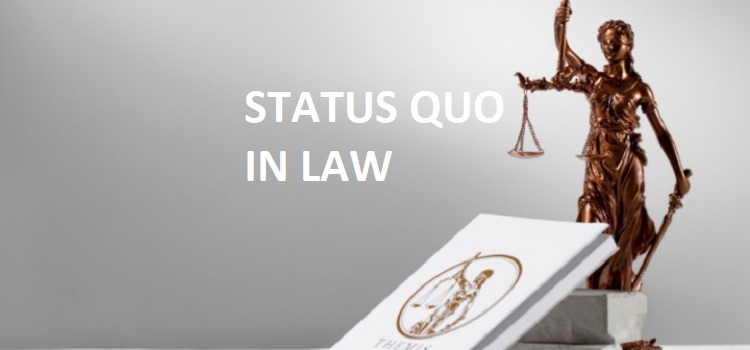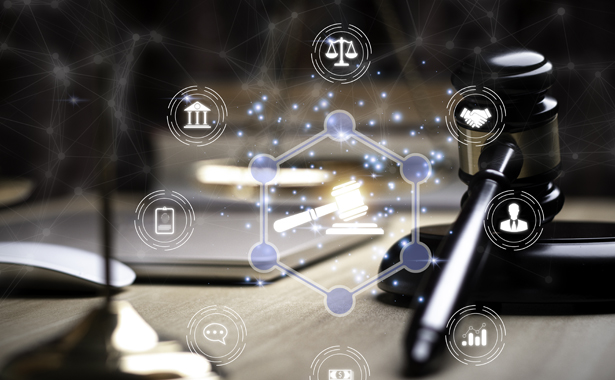Status Quo Meaning Explained: Its Role in Legal Analysis and Practice
Wiki Article
The Function of Status in Shaping Lawful Structures: An Extensive Evaluation
In the intricate tapestry of lawful systems, the condition quo plays a critical role in forming the contours of our legal structures. Embedded within the historic bedrock of lawful norms and affected by the weight of precedents, the standing quo stands as a silent architect, forming the laws that control our societies. However, underneath this relatively secure surface exists a dynamic interaction of societal assumptions, difficulties to established standards, and the gradual march in the direction of progressive reforms. As we browse the maze of lawful evolution, it emerges that recognizing the function of the status is not merely an academic workout however a vital trick to unlocking the intricacies of our legal landscape.Historical Foundations of Legal Norms
Ancient civilizations like Mesopotamia and Egypt laid the groundwork for lawful codes that influenced succeeding lawful advancements. The Roman legal system, with its emphasis on created legislations and jurisprudence, has actually had an enduring effect on Western lawful practices.Additionally, social customs play a significant function in forming lawful norms. These cultural norms usually exist side-by-side with formal lawful frameworks, affecting the interpretation and application of legislations.
Impact of Precedents on Regulations
Formed by previous judicial decisions, the influence of precedents on regulation is a basic facet of legal growth and analysis. Criteria, or formerly determined situations, function as a substantial source of advice for lawmakers when changing or developing new legislations existing ones. In usual law systems, such as those in the United States and the United Kingdom, judicial choices play an important duty in shaping the legal landscape.When courts choose, they not just resolve the immediate conflict available yet likewise develop lawful concepts that can be used in future cases. These principles end up being part of the legal precedent, developing a basis for how similar cases ought to be made a decision in the future. When composing brand-new regulation to make certain uniformity and alignment with recognized legal norms., lawmakers often look to these judicial analyses.
In addition, the impact of criteria prolongs beyond legal analysis. It can likewise influence the evolution of lawful teachings and shape the overall instructions of the lawful system. By considering previous decisions, legislators can make sure that new regulations are in consistency with existing legal principles, advertising security and coherence within the legal structure.
Influence of Societal Expectations on Regulations
The development of legal structures, affected by precedents and judicial choices, is delicately intertwined with the responsiveness of laws to the ever-changing landscape of societal expectations. Society's ideas, norms, and worths play an important role fit the legal landscape by affecting what is considered acceptable or undesirable behavior. Regulations commonly reflect the dominating societal perspectives towards concerns such as discrimination, personal liberties, and the security of prone populations.
Additionally, societal assumptions can additionally produce stress within the legal system when there is a disconnect in between existing legislations and the values held by the bulk of the population. In such cases, there might be ask for legislative reform to make sure that regulations continue to be reflective of the progressing social consciousness. Inevitably, the effect of social expectations on laws highlights the dynamic and responsive nature of legal structures in dealing with the needs and values my sources of culture.
Difficulties to Established Legal Standards
When established conventions clash with arising societal worths,The evolution of legal structures faces powerful obstacles. status quo meaning. Difficulties to established legal standards often occur when typical regulations fall short to appropriately deal with contemporary problems visit this website or when societal norms shift, requiring legal reform. One considerable challenge is the resistance to transform from those that gain from the existing legal structure, leading to inertia in adapting legislations to show current truthsIn addition, the complexities of contemporary culture, such as innovations in technology, globalization, and altering cultural mindsets, posture challenges to out-of-date lawful standards. These changes call for lawful systems to be dynamic and flexible to ensure they continue to be effective and appropriate. Furthermore, inconsistencies in between various legal systems, whether at the worldwide or national level, can develop challenges in balancing regulations to deal with global concerns like climate change or cybercrime.
Relocating In The Direction Of Progressive Legal Reforms
Amidst the advancing landscape of legal frameworks, a proactive technique towards reform is important to resolve the vibrant demands of culture and make sure justice and equity. Modern legal reforms are vital to adapt to altering social norms, technical innovations, and international interconnectedness. These reforms intend to improve access to justice, protect civils rights, advertise equal rights, and maintain the guideline of law.One secret element of moving in the direction of dynamic legal reforms is the recognition of marginalized try these out neighborhoods and their special difficulties. By incorporating varied viewpoints and experiences into the legal decision-making procedure, reforms can better provide to the demands of all individuals within society. Additionally, welcoming advancement in legal techniques, such as digitalization and alternate dispute resolution devices, can enhance processes, lower backlog, and boost effectiveness in delivering justice.
Moreover, partnership in between policymakers, attorneys, civil society companies, and the public is crucial in driving purposeful legal reforms. By cultivating open dialogue and involvement, stakeholders can interact to identify locations for improvement, suggest effective options, and implement sustainable modifications that show the worths and desires of a dynamic culture.

Final Thought
Finally, the status plays a substantial duty in shaping legal structures by attracting from historic structures, influencing legislation through precedents, and mirroring social assumptions. Difficulties to recognized legal paradigms highlight the need for progressive reforms to resolve evolving social concerns. By recognizing the effect of the standing quo on legal standards and supporting for adjustment, societies can strive in the direction of more simply and fair legal systems.In the intricate tapestry of legal systems, the status quo plays a pivotal duty in shaping the shapes of our legal frameworks. The Roman lawful system, with its emphasis on created legislations and jurisprudence, has actually had a long-term effect on Western lawful customs.
By considering past choices, lawmakers can ensure that brand-new laws are in harmony with existing lawful principles, advertising security and coherence within the lawful framework.
Obstacles to recognized lawful paradigms commonly occur when conventional regulations stop working to adequately attend to modern problems or when social standards shift, demanding legal reform. status quo meaning. By acknowledging the influence of the status quo on legal standards and advocating for modification, cultures can make every effort towards even more simply and equitable legal systems
Report this wiki page